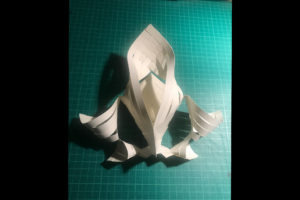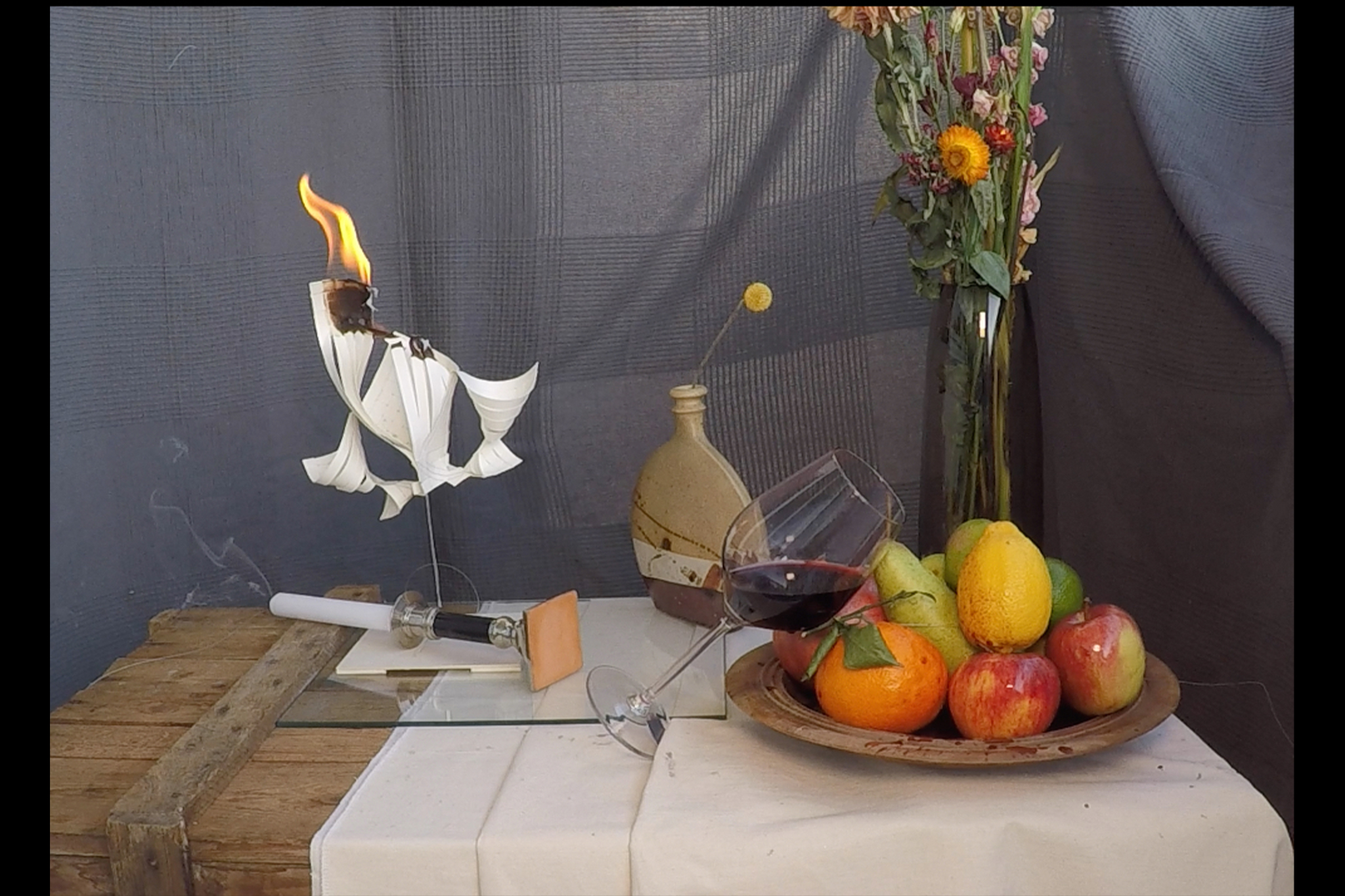VANITAS POKAL
Ausgangspunkt dieser Semesterarbeit sind die im KGM-Berlin ausgestellten Nautilus Pokale, welche gegen Mitte bis ende des 16. Jahrhunderts in den westeuropäischen Küstenregionen gefertigt wurden. Für die Goldschmiede waren die meist aus Asien stammenden Nautilusschalen beliebte Objekte, an welchen sie all ihre Fertigkeiten und die Finesse ihres Handwerks demonstrieren konnten. Für die hochrangigen Adelsmänner welche diese Nautilus Pokale erwarben oder geschenkt bekamen, waren diese Gegenstände mehr ein Prestigeobjekt als ein Nutzgegenstand, welche ihren sozialen Status und Macht demonstrieren sollten. Zur späten Renaissance Zeit wurde der Nautilus Pokal ein beliebtes Motiv in der Kunst der Vanitas Stillleben und zum Symbol der Vergänglichkeit allen Reichtums und der Eitelkeit. Die Intention des „Vanitas Pokal“ ist es, die Bedeutung des Nautilus Pokals in der Kunst und des Handwerks in eine Zeitgemäße Abstraktion zu bringen. Mit dem von Vorurteilen befreiten weißem Blatt Papier soll der Focus auf den Pokal an sich gesetzt werden, möglichst befreit von jeglicher Ornamentik und Symbolismus. Die Bearbeitung des Papiers in seiner filigranen Zerbrechlichkeit gleicht dem Handwerk eines Goldschmiedes und das Material an sich ist sehr Anfällig für jede Art von Verwitterung und damit auch für Vergänglichkeit. Mit der Handlung das von mir erarbeitete Objekt zu entzünden und verbrennen zu lassen, wollte ich nicht nur den Aspekt der Vergänglichkeit unterstreichen, sondern die Schönheit des Moments möglichst in den Fokus setzen und zelebrieren.
The starting point for this project were the nautilus goblets exhibited in the KGM-Berlin, which were produced in the mid to late 16th century in the coastal regions of Western Europe. For the goldsmiths, the nautilus goblets, which were mostly imported from Asia, were popular objects on which they could demonstrate all their skills and finesse of their craft. For the noblemen who purchased or were given these goblets, they were more an object of prestige than of utility, intended to demonstrate their social status and power. In the late Renaissance period, the nautilus cup became a popular motif in vanitas still life art and a symbol of the transience of all wealth and vanity. The intention of the „Vanitas Cup“ is to transfer the meaning of the nautilus goblet in arts and crafts into a contemporary abstraction. With the white sheet of paper, freed from prejudices, the focus is to be placed on the goblet itself, freed as far as possible from any ornamentation and symbolism. The processing of the paper in its fragility resembles the craft of a goldsmith and the material itself is very susceptible for any kind of weathering and thus also for transience. With the act of setting the object I created on fire and watching it burn down, not only did I mean to emphasize the aspect of transience, but also to focus on and celebrate the beauty of the moment as much as possible.
Prozess











